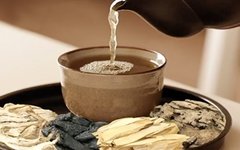
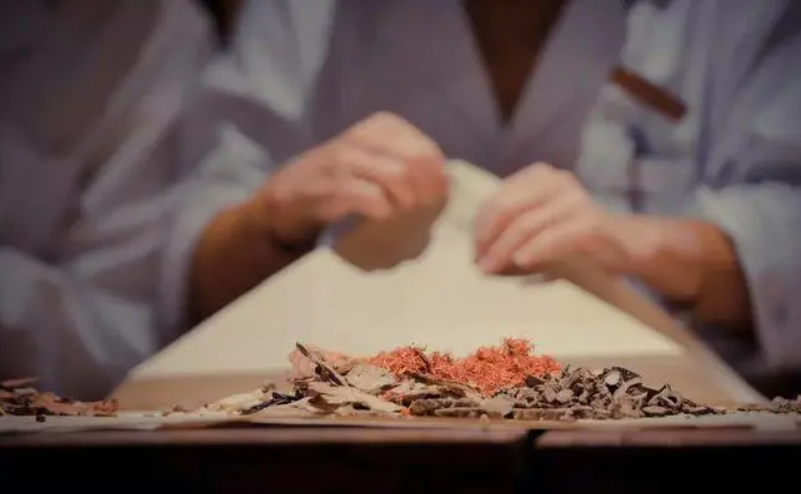
Any combination of herbs used to nourish and replenish blood for the treatment of blood deficiency syndromes is collectively referred to as buxue ji (blood tonics).
This type of formula is suitable for symptoms such as dizziness, blurred vision, pale complexion; pale lips, brittle nails; palpitations, insomnia; dry stools; women with irregular menstrual cycles, scanty and pale menstrual flow; thin and rapid pulse or thin and choppy pulse, pale red tongue, slippery and scanty coating, etc.
These formulas often include ingredients such as Shu Di Huang (Rehmannia Root), Dang Gui (Angelica Sinensis), Bai Shao (White Peony), and Ejiao (Donkey-hide Gelatin), with representative formulas including Si Wu Tang (Four Substance Decoction), Gui Pi Tang (Restore the Spleen Decoction), and Dang Gui Bu Xue Tang (Angelica Blood Nourishing Decoction).
1. Si Wu Tang (Four Substance Decoction) from Taiping Huimin Heji Ju Fang
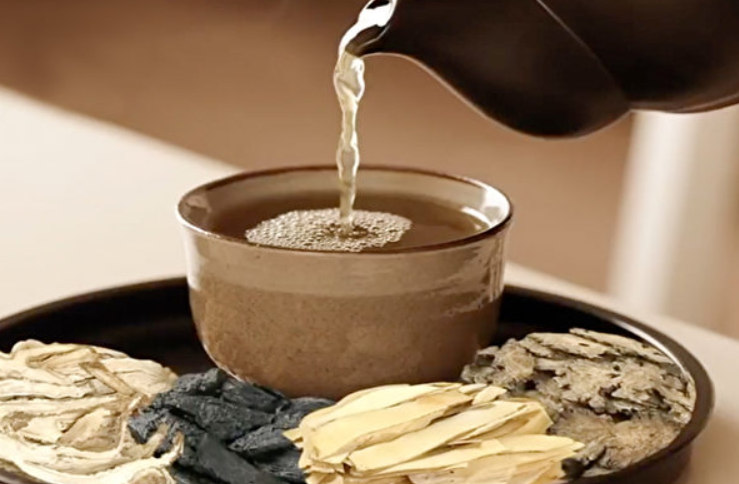
Ingredients: Dang Gui (Angelica Sinensis) without the peel, wine-soaked and stir-fried (10g), Chuan Xiong (Ligusticum Chuanxiong) (8g), Bai Shao (White Peony) (12g), Shu Di Huang (Rehmannia Root) (12g, prepared product, or 12g of raw Rehmannia dried in the sun).
Dosage: Grind into coarse powder, take 3 qian (9g), boil with 1.5 cups of water until reduced to 8 parts, strain and take warm on an empty stomach before meals. If there is instability in pregnancy with bleeding, add 10 leaves of Ai Ye (Mugwort) and 1 piece of Ejiao, and decoct as before.
For blood deficiency with cold, excessive bleeding, also add Ejiao and Ai Ye for decoction (modern usage: prepare as a soup, decoct three times, take on an empty stomach in the morning, noon, and evening).
Function: Nourishes and regulates blood.
Indications: Deficiency of Chong and Ren vessels. Irregular menstruation, abdominal pain, excessive bleeding. Blood stasis with hard masses causing pain. Instability in pregnancy with continuous bleeding, postpartum lochia not expelling, hard abdominal masses, intermittent cold and heat.
Formula Explanation: This formula is the primary formula for nourishing blood and regulating menstruation, derived from Jin Gui Yao Lue – Women’s Pregnancy Chapter by removing Ejiao, Ai Ye, and Gan Cao from Qiong Gui Jiao Ai Tang. It serves as a foundation for various blood deficiency syndromes, adjusted according to symptoms.
The Chong vessel is the sea of blood, and the Ren vessel governs the uterus. If the Chong vessel is deficient, women may experience scanty menstrual flow, pale color, and delayed periods.
If there is cold stagnation in the lower abdomen, it may cause abdominal pain. If the spleen is deficient and cannot hold blood, or if the kidney is deficient and the Chong and Ren vessels are unstable, symptoms such as excessive bleeding may occur.
Additionally, if there is cold stagnation in the liver, blood flow may be obstructed, leading to hard masses and pain in the lower abdomen and around the navel.
This formula uses Dang Gui to nourish and invigorate blood; Shu Di Huang primarily nourishes blood; Chuan Xiong regulates blood circulation; Bai Shao nourishes blood and astringes yin. Thus, the entire formula is classified as a blood tonic. However, the combination is appropriate, nourishing blood without causing stagnation, promoting blood flow without damaging it, balancing nourishment and dispersal, forming a key formula for treating blood issues.
Modification Methods:
1. If there is cold in the blood with abdominal pain during menstruation, consider adding Pao Jiang (dried ginger), Gui Zhi (cinnamon twig), Wu Yu (evodia), Zhi Ke (bitter orange), Xiang Fu (cyperus), Sang Ji Sheng (mistletoe), and Xu Duan (dipsacus) to warm cold, regulate qi, promote blood flow, and relieve pain.
2. If there is bleeding during pregnancy, add Ejiao, wine-fried Ai Ye, and roasted Gan Cao to create Qiong Gui Jiao Ai Tang.
3. If there is blood stasis, add Dan Shen (salvia), Tao Ren (peach kernel), and Hong Hua (safflower) to promote blood flow and eliminate stasis.
4. If there is blood deficiency with heat, add Huang Qin (scutellaria) and Dan Pi (moutan root).
5. If there is qi deficiency unable to hold blood, add Lu Dang Shen (codonopsis) and Huang Qi (astragalus) and Bai Zhu (white atractylodes).
In summary, this formula can be adjusted according to symptoms to govern various blood conditions.
2. Sheng Yu Tang (Holy Recovery Decoction) from Yi Zong Jin Jian
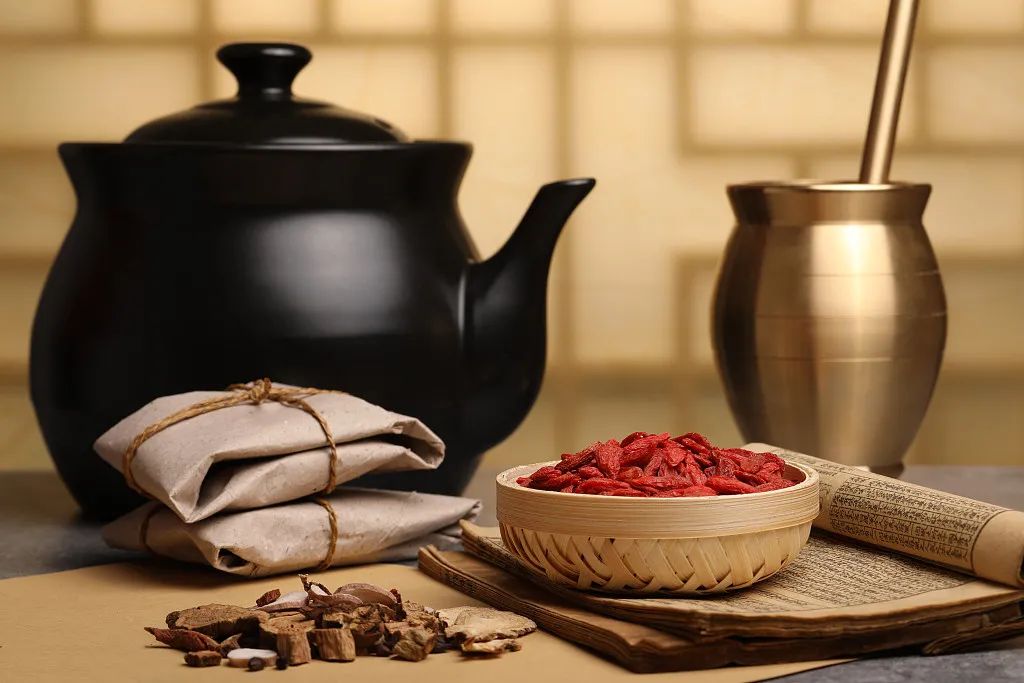
Ingredients: Shu Di Huang (Rehmannia Root) 7.5 qian (20g), Bai Shao (White Peony) mixed with wine, 7.5 qian (15g), Chuan Xiong (Ligusticum Chuanxiong) 7.5 qian (8g), Ren Shen (Ginseng) 7.5 qian (generally use Lu Dang Shen 20g), Dang Gui (Angelica Sinensis) washed with wine, 5 qian (15g), Huang Qi (Astragalus) 5 qian (18g).
Decoct in water.
Function: Tonifies qi, nourishes blood, and stabilizes blood.
Indications: Early menstruation with heavy flow, pale color, fatigue in limbs, and general weakness. This syndrome is due to qi and blood deficiency, unable to stabilize blood, hence Si Wu Tang is used to nourish and regulate blood, with the addition of ginseng and astragalus to tonify qi and stabilize blood.
3. Tao Hong Si Wu Tang (Peach and Safflower Four Substance Decoction) from Yi Zong Jin Jian
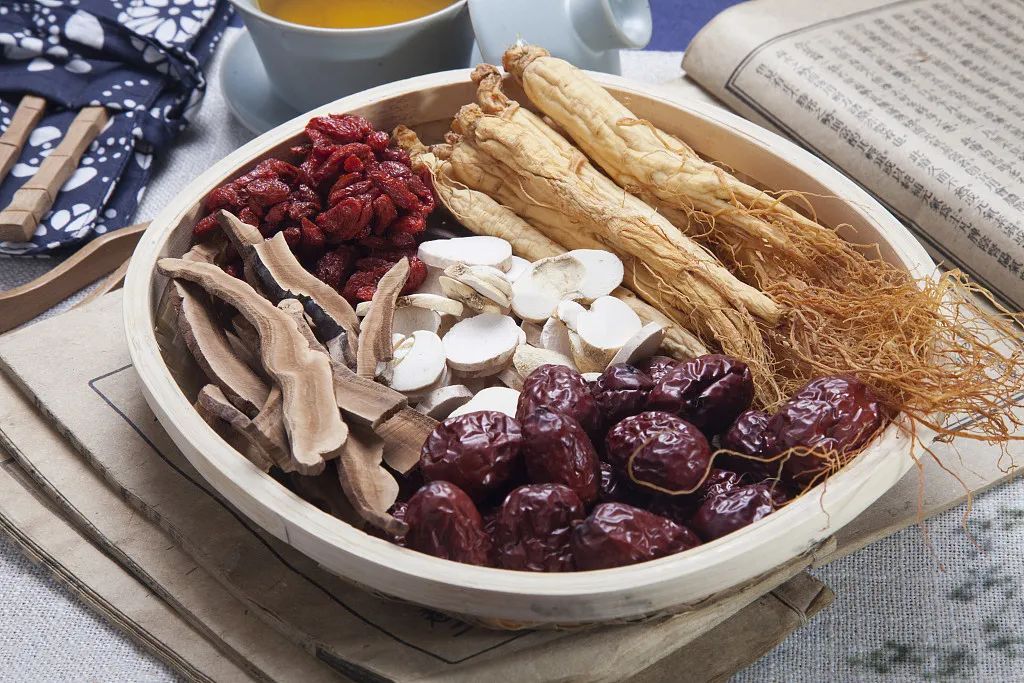
Ingredients: Shu Di Huang (Rehmannia Root) 2 qian (or use Gan Di Huang 15g), Chuan Xiong (1 qian) (8g), Bai Shao (2 qian, stir-fried) (10g), Dang Gui (2 qian) (12g), Tao Ren (Peach Kernel) (6g), Hong Hua (Safflower) (4g).
Decoct and take three times a day, finishing in one day.
Function: Nourishes blood, invigorates blood, and eliminates stasis.
Indications: Women with early menstruation, heavy flow, purple color, thick consistency, or with clots, abdominal pain, and bloating.
This formula nourishes blood and invigorates blood by adding peach and safflower to promote blood flow. When blood flows smoothly, abdominal pain and bloating will subside. However, this formula is strong in its action to invigorate blood and eliminate stasis, so it should not be taken excessively, as it may lead to excessive bleeding or heavy menstrual flow.
4. Dang Gui Bu Xue Tang (Angelica Blood Nourishing Decoction) from Nei Wai Shang Bian Huo Lun
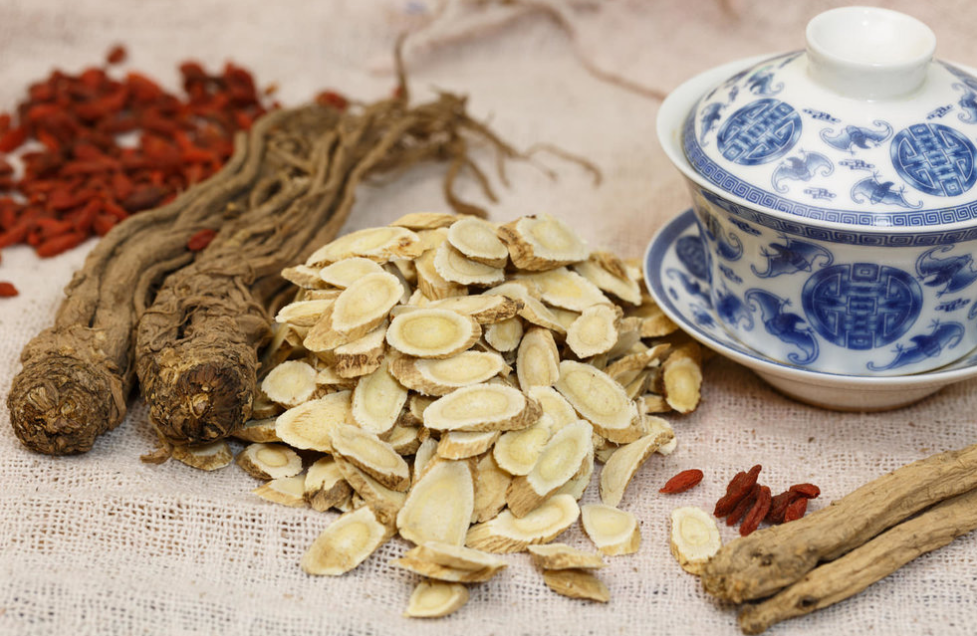
Ingredients: Huang Qi (Astragalus) 1 liang (30g), Dang Gui (Angelica Sinensis) 2 qian, washed with wine (6g).
Dosage: Grind into a single dose, decoct until 1 cup, strain and take warm on an empty stomach (modern usage: decoct three times, take on an empty stomach in the morning, noon, and evening).
Function: Tonifies qi and generates blood.
Indications: Internal injury from overwork, qi weakness, blood deficiency, floating yang. Symptoms include heat in the muscles, red face, thirst, large and weak pulse, and in women, blood deficiency during menstruation or postpartum with fever and headache. Also for chronic non-healing sores.
Formula Explanation: This formula is indicated for internal injury from overwork, insufficient original qi, affecting yin and blood, leading to floating yang. Symptoms include heat in the muscles, red face, thirst, large and weak pulse. Therefore, it is used to tonify qi and generate blood.
Since tangible blood is generated from intangible qi, this formula heavily utilizes Huang Qi to greatly tonify the qi of the spleen and lungs, thus enriching the source of blood; it also uses Dang Gui to nourish blood and harmonize the nutrients, allowing yang to generate yin and qi to promote blood generation.
As Wu He Gao stated, “Tangible blood cannot generate itself; it is generated from intangible qi” (from Ming Yi Fang Lun), which serves as the theoretical basis for treating the root cause of this syndrome.
For women with blood deficiency during menstruation, postpartum fever, and headache, this formula is used to tonify qi and nourish blood to reduce fever. For chronic non-healing sores, this formula is used to tonify qi and nourish blood, which is beneficial for tissue regeneration and healing.
The symptoms presented in this formula are quite similar to those of the Bai Hu Tang syndrome, which includes a large pulse, thirst, fever, and red face. However, upon careful examination, there are strict distinctions between the two syndromes.
The Bai Hu syndrome has a large and full pulse, great thirst with a preference for cold drinks, high fever with profuse sweating, which are the characteristic features of the Bai Hu syndrome. In contrast, the Dang Gui Bu Xue syndrome has a large but weak pulse, thirst with a preference for warm drinks, and mild heat without significant elevation, without profuse sweating.
Therefore, when using this formula, it is essential to differentiate between the two aspects of fever: the excess heat of the yangming and the deficiency of qi and blood, as well as the floating yang. If the differentiation is unclear, using this formula may not only be ineffective but may also lead to adverse effects of “deficiency on deficiency” or “excess on excess”.
5. Gui Pi Tang (Restore the Spleen Decoction) from Ji Sheng Fang
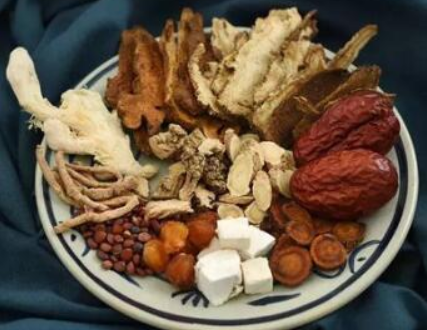
Ingredients: Bai Zhu (White Atractylodes) 1 liang (30g), Fu Shen (Poria) without wood, 1 liang (30g), Huang Qi (Astragalus) without peel, 1 liang (30g), Long Yan Rou (Longan Fruit) 1 liang (30g), Suan Zao Ren (Sour Jujube Seed) stir-fried, without shell, 1 liang (30g), Ren Shen (Ginseng) 0.5 liang (15g), Mu Xiang (Aucklandia) without fire, 0.5 liang (15g), Gan Cao (Licorice) roasted, 2 qian 5 fen (8g), Dang Gui (Angelica Sinensis) 1 qian (3g), Yuan Zhi (Polygala) honey-roasted, 1 qian (3g) (both Dang Gui and Yuan Zhi are added from Jiao Zhu Fu Ren Liang Fang).
Dosage: Grind and mix, take 4 qian (12g), boil with 1.5 cups of water, add 5 slices of ginger and 1 jujube, decoct until 7 parts remain, strain and take warm, without time restrictions.
Modern Usage: Add 6g of fresh ginger and 3-5 jujubes, decoct in water. Alternatively, adjust the dosage ratio to make honey pills, each pill weighing about 15g, taken on an empty stomach, 3 times a day with warm water.
Function: Tonifies qi, nourishes blood, strengthens the spleen, and nourishes the heart.
Indications:
1. Deficiency of both heart and spleen. Excessive thinking and worry injure the heart and spleen, leading to insufficient qi and blood. Symptoms include palpitations, forgetfulness, insomnia, night sweats, weakness, poor appetite, pale yellow complexion, pale tongue, thin white coating, and weak pulse.
2. Spleen not governing blood. Symptoms include blood in the stool, excessive menstrual flow, or prolonged menstrual bleeding, or continuous discharge.
Formula Explanation: This formula primarily treats the deficiency of both heart and spleen.
The heart houses the spirit and governs blood, while the spleen governs thought and controls blood. Excessive thinking and worry injure the heart and spleen, leading to deficiency of qi and blood, resulting in fatigue, poor appetite, and heat; the heart blood is consumed, leading to symptoms such as palpitations, forgetfulness, insomnia, night sweats; pale yellow complexion, pale tongue, thin white coating, and weak pulse are all signs of insufficient qi and blood.
The treatment should focus on tonifying qi and nourishing blood, strengthening the spleen, and nourishing the heart.
The formula includes Ren Shen, Huang Qi, Bai Zhu, Gan Cao, Ginger, and Jujube to warm and tonify the spleen and benefit qi; Dang Gui nourishes the liver and generates heart blood; Fu Shen, Suan Zao Ren, and Long Yan Rou nourish the heart and calm the spirit; Yuan Zhi connects the heart and kidney to calm the mind; Mu Xiang regulates qi and awakens the spleen to prevent the tonifying herbs from causing stagnation, which would hinder the spleen and stomach’s function.
Thus, this formula advances both heart nourishment and spleen strengthening, integrating qi tonification and blood nourishment.
The spleen governs blood and controls blood; if the spleen qi is deficient, it cannot control blood, leading to blood in the stool; in women, it may result in instability of the blood sea, causing excessive menstrual flow or prolonged bleeding; if the spleen is deficient and cannot transport dampness, it may lead to excessive discharge.
This formula can tonify spleen qi, support spleen yang, and nourish liver blood, thus treating the aforementioned symptoms of blood in the stool, excessive menstrual flow, and discharge.
In modern applications, this formula is used for neurasthenia, heart disease, anemia, functional uterine bleeding, and thrombocytopenic purpura. As long as the syndrome is characterized by deficiency of both heart and spleen, it can be adjusted according to symptoms and has shown significant efficacy.
Gui Pi Tang was first recorded in the Song Dynasty by Yan Yonghe in Ji Sheng Fang, used to treat excessive thinking and worry injuring the heart and spleen, leading to forgetfulness and palpitations.
In the Yuan Dynasty, Wei Yilin expanded on this formula in Shi Yi De Xiao Fang, which not only recorded the original indications but also added treatments for spleen not governing blood, leading to vomiting blood and bleeding.
In the Ming Dynasty, Xue Lizhai in Jiao Zhu Fu Ren Liang Fang added Dang Gui and Yuan Zhi to the original formula, which has been used ever since.
In the Qing Dynasty, Wang Ren’an in Yi Fang Ji Jie further expanded its applicability, using it for palpitations, night sweats, poor appetite, women’s discharge, and intestinal wind bleeding. These adaptations were gradually perfected by later physicians through clinical practice.
This formula shares the function of tonifying qi with Buxin Yiqi Tang, but the differences lie in:
1. Different combinations: this formula combines tonifying qi and spleen with nourishing the heart and calming the spirit, aiming to strengthen the spleen and nourish the heart, restoring its function of governing blood and generating blood; Buxin Yiqi Tang combines tonifying qi and spleen with uplifting sinking yang, aiming to tonify qi and elevate, restoring its function of clearing and descending.
2. Different indications: this formula primarily treats deficiency of both heart and spleen and spleen not governing blood, leading to palpitations, forgetfulness, poor appetite, and blood in the stool; Buxin Yiqi Tang primarily treats spleen and stomach qi deficiency with fever, fatigue, shortness of breath, and sinking or prolapse.
6. Zhi Gan Cao Tang (Honey-Fried Licorice Decoction) from Shang Han Lun
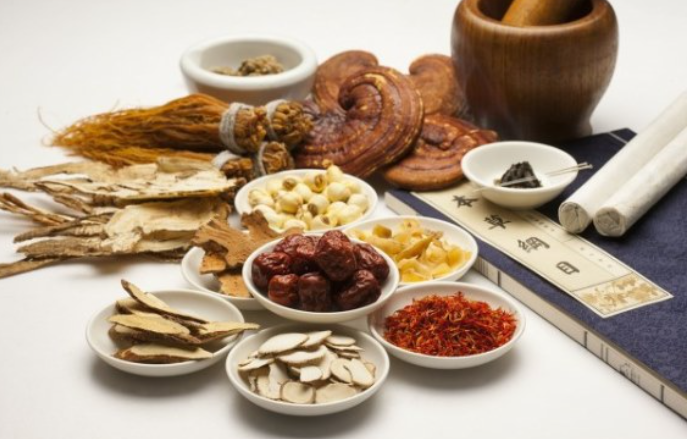
Ingredients: Gan Cao (Licorice) 4 liang (12g), honey-fried Sheng Jiang (fresh ginger) 3 liang (9g), sliced, Ren Shen (Ginseng) 2 liang (6g), Sheng Di Huang (Raw Rehmannia) 1 jin (30g), Gui Zhi (Cinnamon Twig) 3 liang (9g), peeled, Ejiao (Donkey-hide Gelatin) 2 liang (6g), Mai Men Dong (Ophiopogon) half sheng (10g), without heart, Ma Ren (Sesame Seed) half sheng (10g), Da Zao (Jujube) 30 pieces (5-10 pieces).
Dosage: Combine the nine ingredients with 7 sheng of clear wine and 8 sheng of water, first boil the eight ingredients, take 3 sheng and strain, dissolve the Ejiao completely, and take 1 sheng warm, three times a day.
Modern Usage: Retain Ejiao, mix the other ingredients, decoct, and pour out the juice, adding 10ml of clear wine. Separately, slightly boil Ejiao in a little water until dissolved, then mix into the decoction and take in three doses, finishing in one day.
Function: Tonifies qi, nourishes yin, replenishes blood, and restores pulse.
Indications:
1. Qi deficiency and blood weakness. Symptoms include pulse irregularities or intermittent pulse, palpitations, weakness, pale tongue, and dry mouth.
2. Deficiency of yin leading to lung atrophy. Symptoms include dry cough without phlegm, or phlegm with blood streaks, thin body, shortness of breath, fatigue, night sweats or spontaneous sweating, dry throat, and constipation.
Formula Explanation: This formula in Shang Han Lun is used for symptoms of “irregular pulse and palpitations.” The clinical manifestations of irregular pulse are described in Bin Hu Mai Xue: “Irregular pulse is slow and sometimes stops, then resumes.”
This syndrome is caused by yang deficiency failing to circulate the pulse qi, and yin deficiency failing to nourish the heart blood. Symptoms of restlessness and insomnia, pale tongue, and dry mouth are also due to insufficient yin and blood.
Thus, the formula uses honey-fried licorice, ginseng, and jujube to tonify qi and nourish the heart and spleen; raw rehmannia, ophiopogon, ejiao, and sesame seed provide sweet and moistening properties to nourish yin, heart blood, and moisten the lungs.
Ginger, cinnamon, and wine are all warm in nature, promoting yang and restoring pulse, while harmonizing with the tonifying and nourishing herbs to ensure smooth circulation of qi and blood. Together, they achieve the effects of tonifying qi, restoring pulse, nourishing yin, and replenishing blood.
For symptoms of qi and yin deficiency, such as dry cough, the warming herbs should be used cautiously or avoided, as they may consume yin fluids.
7. Jia Jian Fu Mai Tang (Modified Recovery Pulse Decoction) from Wen Bing Tiao Bian
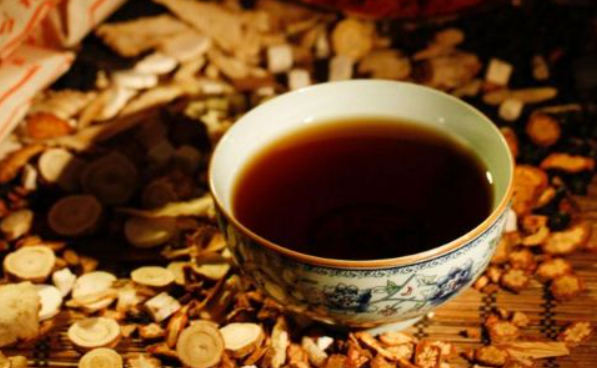
Ingredients: Honey-fried Gan Cao (Licorice) 6 qian (5g), Sheng Di Huang (Raw Rehmannia) 6 qian (20g), Bai Shao (White Peony) 6 qian (18g), Mai Men Dong (Ophiopogon) 5 qian (15g), without heart, Ejiao 3 qian (10g), Ma Ren 3 qian (10g).
Boil with 8 cups of water, decoct until 8 parts remain, take in three doses.
If severe, increase licorice to 1 liang, and increase raw rehmannia and white peony to 8 qian, and take three times a day, one at night.
Modern Usage: Decoct three times a day, taking on an empty stomach in the morning, noon, and evening. The method for Ejiao is the same as in Zhi Gan Cao Tang.
This formula is derived from Zhi Gan Cao Tang by removing ginseng, cinnamon, ginger, jujube, and wine, and adding Bai Shao.
Function: Nourishes blood, astringes yin, generates fluids, and moistens dryness.
Indications: Yangming bowel excess syndrome, after purging, the excess heat has been removed, but yin fluids are still deficient, resulting in symptoms of “weak pulse, heat in the hands and feet more than in the back.”
Thus, this formula takes the meaning of Zhi Gan Cao Tang, removing the warming and pungent ingredients, and adding the blood-nourishing and yin-aiding Bai Shao, forming a purely yin and moistening formula.

【Food Therapy Expert】 Course Highlights
For more exciting content, see the end of the article “Read the Original“

Inheriting the Wisdom of Food Therapy;
Understanding the True Essence of Diet.
 CourseSelection
CourseSelection
[Food Therapy Applications] Food Therapy for Beauty
[Food Therapy Classics] Shen Nong’s Materia Medica
[Food Therapy Daily Use] Vegetarian Food Therapy Course
For inquiries about the course, please contact Teacher Jian: 13366238953 (Mobile/WeChat)
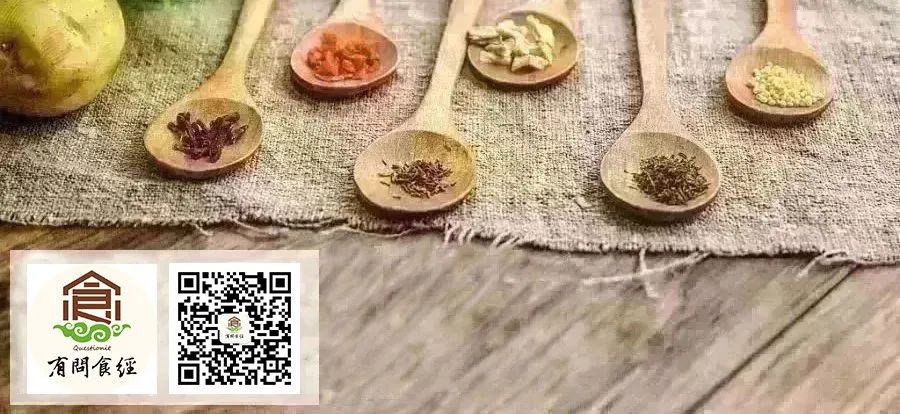
The article material is collected from the internet; if there is any infringement, please contact for removal!
For more exciting content, click to view

